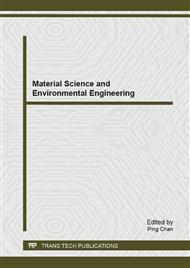p.109
p.113
p.118
p.125
p.130
p.136
p.141
p.145
p.150
Simulation of the Yield Strength of Mo Alloys at Both Room and Elevated Temperatures
Abstract:
In this paper, the yield strength of a kind of carbide strengthened molybdenum (Mo) alloy has been investigated at both room and elevated temperatures. OM image showed that the sintered Mo alloy has an average grain size of ~20 μm. SEM image of the fracture surface of the sintered Mo alloy after tensile deformation to facture showed that intergranular fracture is the dominant mechanism at room temperature. A constitutive model has been developed to simulate the yield strength of Mo alloys at both room and elevated temperatures. It has been shown that the evolution trend of the yield strength predicted by the constitutive model broadly agrees with the experimental counterparts. The simulation indicated that creep dominates the deformation when the temperature is above 1200 K, while dislocation overcoming the obstacles through thermal activation dominates the deformation when the temperature is below 1200 K.
Info:
Periodical:
Pages:
130-135
Citation:
Online since:
May 2014
Authors:
Keywords:
Price:
Сopyright:
© 2014 Trans Tech Publications Ltd. All Rights Reserved
Share:
Citation:


